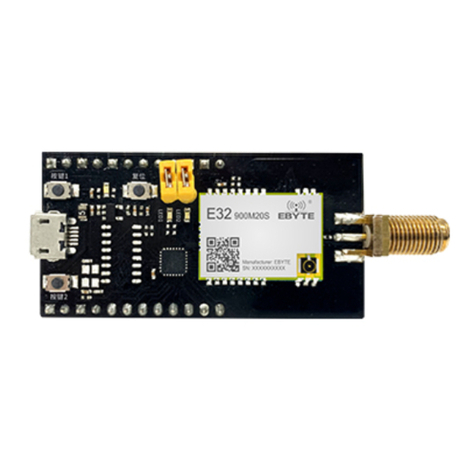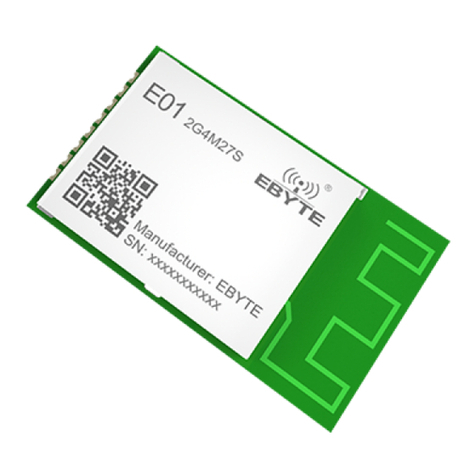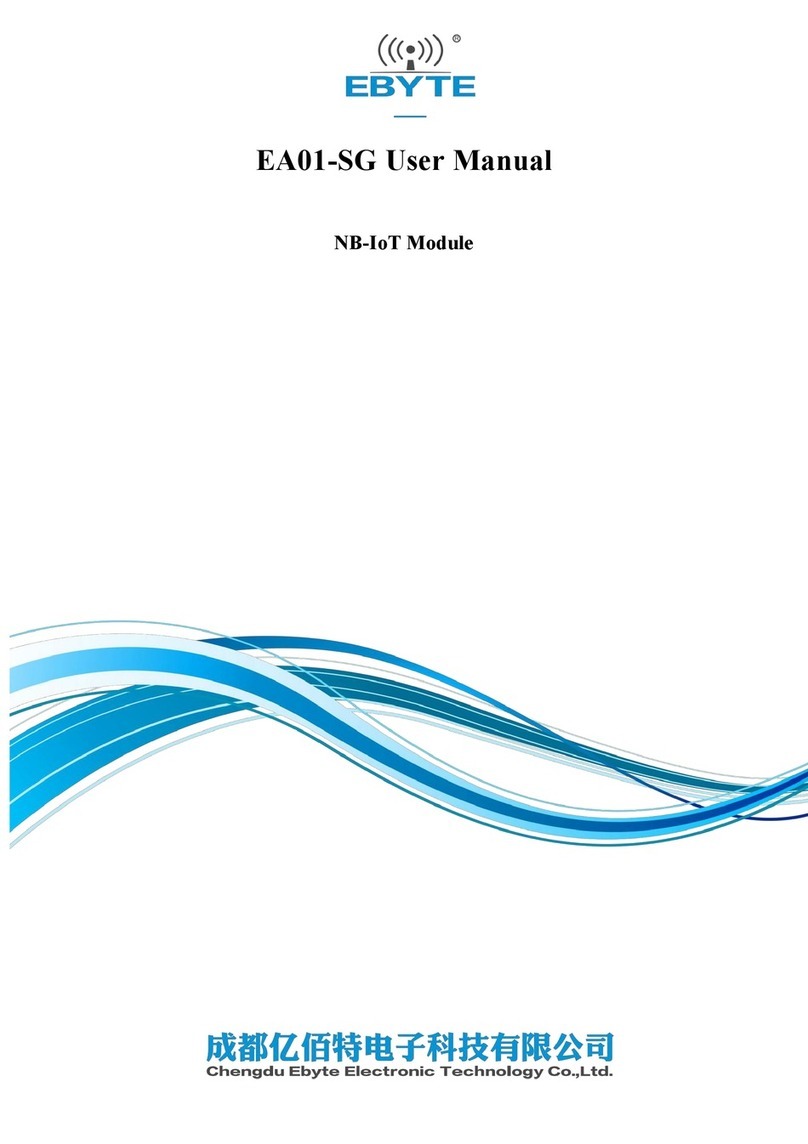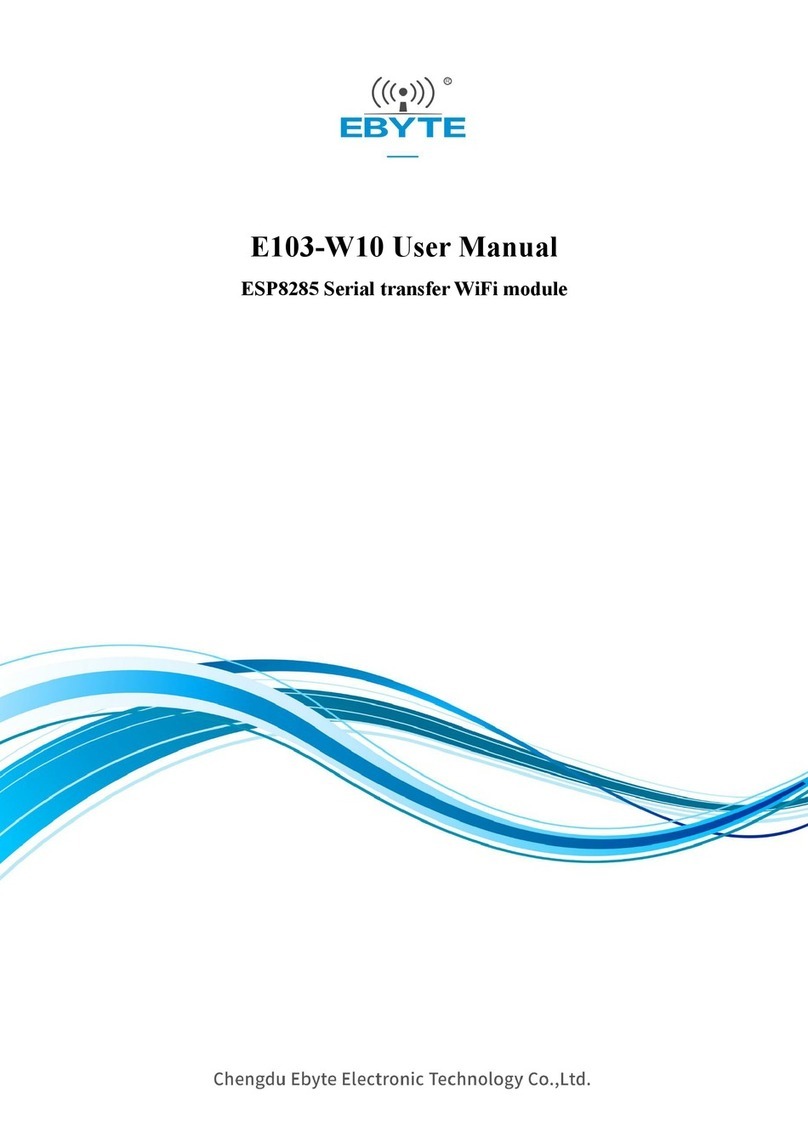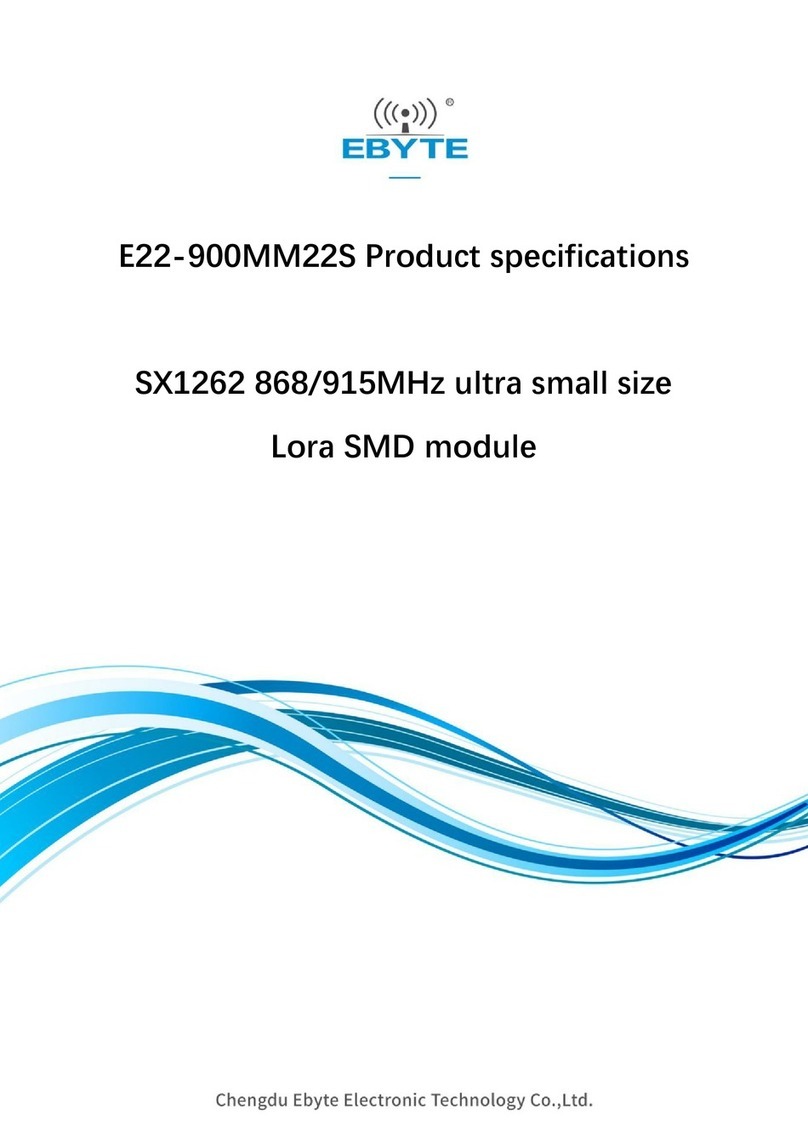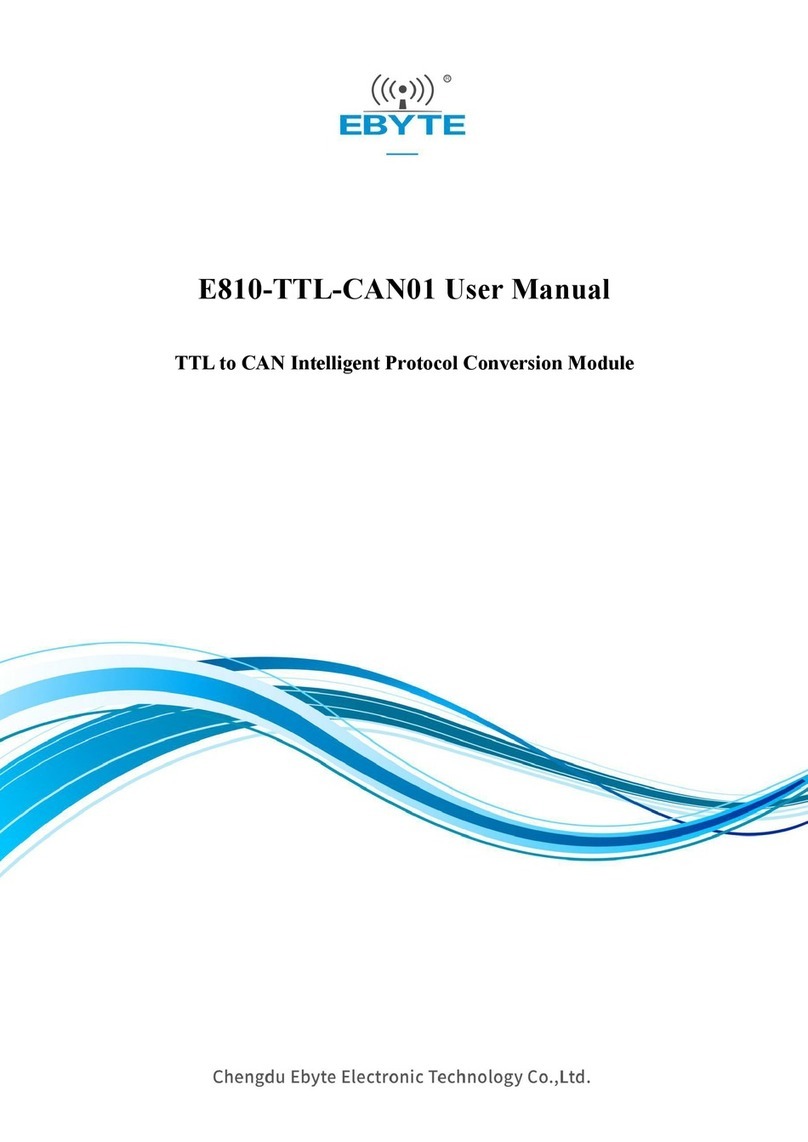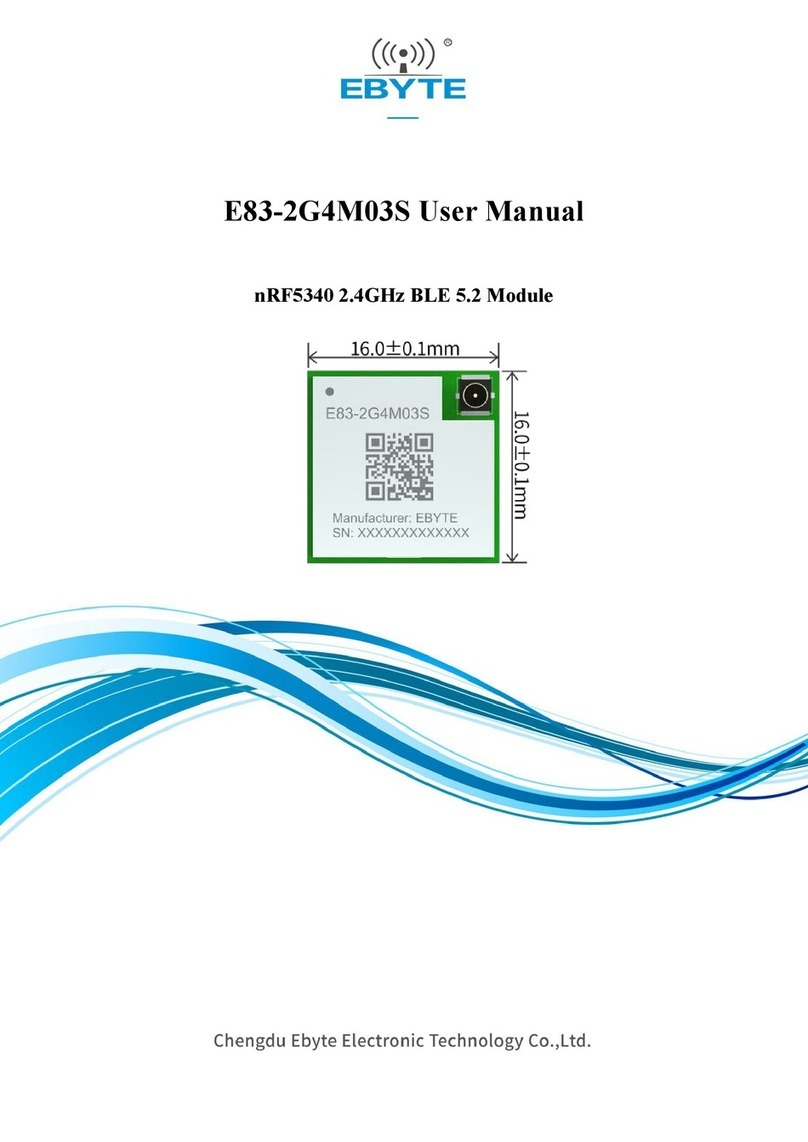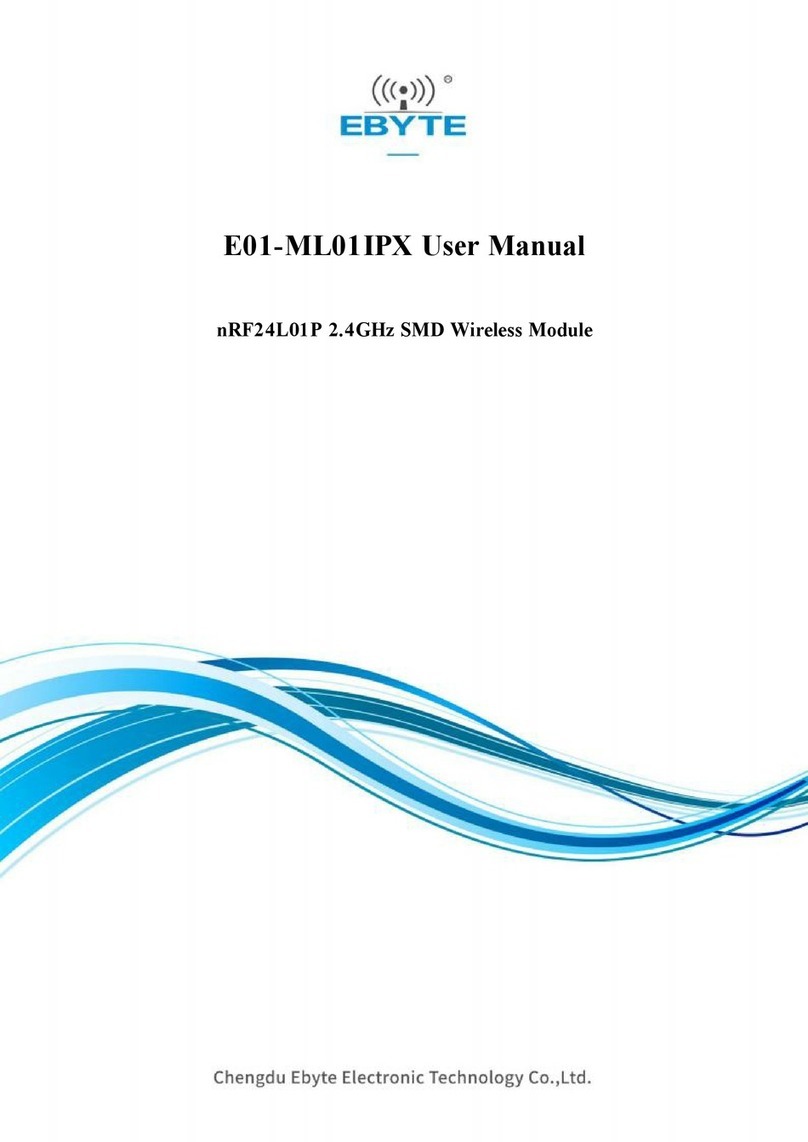
Chengdu Ebyte Electronic Technology Co.,Ltd. E104-BT12NSP User Manual
Copyright ©2012–2021,Chengdu Ebyte Electronic Technology Co.,Ltd.
CONTENTS
DISCLAIMER............................................................................................................................................................................................. 3
1. PRODUCT OVERVIEW......................................................................................................................................................................... 4
1.1 BRIEF INTRODUCTION....................................................................................................................................................4
1.2 FEATURE........................................................................................................................................................................ 4
1.3 APPLICATION..................................................................................................................................................................4
2. TECHNICAL PARAMETERS................................................................................................................................................................ 5
2.1 LIMIT PARAMETER......................................................................................................................................................... 5
2.2 OPERATING PARAMETER................................................................................................................................................ 5
2.3 DIMENSION AND PIN DEFINITION..................................................................................................................................6
3. BASIC OPERATION............................................................................................................................................................................... 7
3.1 HARDWARE DESIGN....................................................................................................................................................... 7
3.2 BASIC CIRCUIT.............................................................................................................................................................. 8
4. FUNCTIONAL INTRODUCTION......................................................................................................................................................... 9
4.1 BASIC CONCEPT.......................................................................................................................................................... 10
4.1.1 NETKEY....................................................................................................................................................................10
4.2 DATA FORMAT..............................................................................................................................................................13
5. SWITCH DIO........................................................................................................................................................................................ 21
5.1 USE OF SWITCHES........................................................................................................................................................21
6. QUICK GET START............................................................................................................................................................................. 21
6.1 RESTORE FACTORY SETTINGS RESTORE....................................................................................................................... 22
6.2 EQUIPMENT ENTERS THE NET AND CONTROLS THE EQUIPMENT..................................................................................22
6.3 SIG MESSAGES............................................................................................................................................................28
6.4 TRANSMISSION OF INFORMATION................................................................................................................................ 29
6.5 LOW POWER CONSUMPTION (E104-BT12LSP).......................................................................................................... 31
7. FAQ........................................................................................................................................................................................................ 31
7.1 POOR TRANSMISSION RANGE.......................................................................................................................................31
7.2 MODULE IS EASY TO DAMAGE.....................................................................................................................................32
7.3 THE ERROR RATE IS TOO HIGH..................................................................................................................................... 32
8. WELDING INSTRUCTION..................................................................................................................................................................32
8.1 REFLOW WELDING TEMPERATURE.............................................................................................................................. 32
8.2 BACKFLOW WELDING CURVE..................................................................................................................................... 33
9. REVISION HISTORY......................................................................................................................................................................... 34
ABOUT US................................................................................................................................................................................................34
